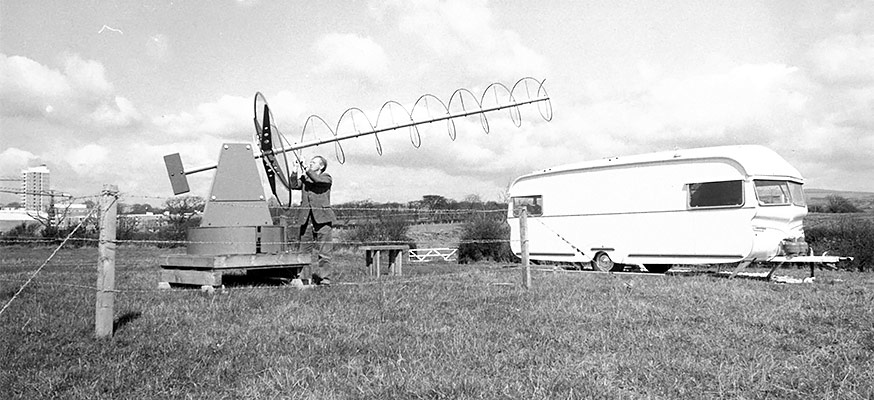Every single day, come rain or shine, one of a team of volunteers has turned out to maintain an unbroken, high-quality meteorological record from Hazelrigg Weather Station – a semi-rural site on the University’s doorstep.
Back in 1966, when the University was still in its infancy, scientists at Lancaster University began taking a daily record of weather conditions at a site right next to the newly built campus.
In the summer of 1976, the observation site was moved away from the growing campus to Hazelrigg, 1 km northeast of the University; but the same diligent, daily record keeping continued.
Today, Hazelrigg is recognised as the UK Meteorological Office’s Climate Station number 7236.
Not only does the data help the Met office validate weather forecasts and climate models, it also contributes to the UK’s official climate statistics. The measurements provide a new generation of students and researchers with a wealth of data to mine.
Just 10 km east of the Irish Sea coast, Hazelrigg’s prevailing south westerly wind makes it a good place for the study of marine aerosol and trace gases. Scientists also monitor trace levels of toxic chemical substances known as Persistent Organic Pollutants or POPs.
As the decades unfolded, new technology was adopted, and today the observations are replicated automatically throughout the day. But for the sake of consistency, some things remain unchanged. Rainfall is still collected in a bottle from a standard 5-inch rain gauge and sunshine is still recorded in scorch marks on pieces of card placed on a Campbell-Stokes sunshine recorder – a glass ball which focuses light into a single beam which makes a ‘burn’ mark on the card.
In 2016, the Met Office made Hazelrigg one of their twelve “designated key UK sunshine sites” as it is one of the relatively few sites still using this method. 50 years’ worth of sunshine cards, created by the instrument at Lancaster, are now archived at the Met Office HQ in Exeter and the Hazelrigg team sends them another one for each day at the end of every month.
Lancaster University’s Dr James Heath is the current field work technician with responsibility for ensuring the record remains unbroken.
He said: “It is really important we keep doing this, in the same way, using the same methods, tempting as it is sometimes to stay in bed, we have to get up and go otherwise the record would be incomplete.”
Dr Oliver Wild, Reader in Atmospheric Science at Lancaster Environment Centre, said: “Hazelrigg has provided a very reliable and consistent record of weather conditions that is a credit to all those who have run and volunteered at the station over the years. It is a fantastic resource for both students and researchers, providing an opportunity to explore changing weather patterns and climate on a local basis. ”
Over recent years the Hazelrigg weather station has captured a number of record weather events including:
- The wettest summer (2012)
- The stormiest winter (2013-14)
- By far the warmest and wettest December (2015, when daytime temperatures at Hazelrigg were a massive 4.5C above average and rainfall was nearly three times the normal amount)
Storm Desmond was the biggest single rainfall event in the whole of the 50-year record with 81.8 mm of rainfall between the Friday night (4th Dec) and the early hours of Sunday (6th).

